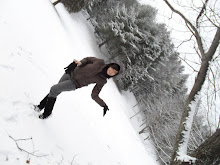
Pointillism is a style of painting in which small distinct points of primary colors create the impression of a wide selection of secondary colors. Also, it is an original form of art created by George Seurat. Pointillism is a bunch of tiny dots formed together to make a picture. Using this techique, he created huge compositions with tiny, detached strokes of pure colour too small to be distinguished when looking at the entire work but making his paintings shimmer with brilliance. Works in this style include Un dimanche après-midi à l'Ile de la Grande Jatte.


This technique, pointillism, had been used in many ways and long time periods, and one can perceive its transition in the actual artworks, new techniques and effects. For example, The Ben-Day Dots printing process, named after illustrator and printer Benjamin Day, is similar to Pointillism. Depending on the effect, color and optical illusion needed, small colored dots are closely-spaced, widely-spaced or overlapping. Roy Lichtenstein has popularized Benday dots in his comic book paintings.
If one returns to Seurat’s style, also, one can find similarities between his pictures and actual art; such as, album`s art of famous singers and on optical illusions.
 The realism in his pictures and le had a great influence on the impressionists and, through them, on 20th-century art. Norman Rockwell was a 20th century American painter and illustrator. His works enjoy a broad popular appeal in the United States, where Rockwell is most famous for the cover illustrations of everyday life scenarios.
The realism in his pictures and le had a great influence on the impressionists and, through them, on 20th-century art. Norman Rockwell was a 20th century American painter and illustrator. His works enjoy a broad popular appeal in the United States, where Rockwell is most famous for the cover illustrations of everyday life scenarios.



 Cezanne was obsessed with form rather than content, so the subject was not important to him, also he paved the way for modern art by directly influencing Cubists. This artist used an impasto technique-thick, emotional strokes stabbing at the canvas with his palette knife. Artists use this technique today.
Cezanne was obsessed with form rather than content, so the subject was not important to him, also he paved the way for modern art by directly influencing Cubists. This artist used an impasto technique-thick, emotional strokes stabbing at the canvas with his palette knife. Artists use this technique today.







 As well as Turner, who based his pictures in natural disasters, and landscapes of destruction and sadness in the world. Both, they used colours to emphasize the dramatic scene, the predominant basic colors and solid, and the use of reflexes. Turner's first period is marked by mythological and historical scenes in which the coloring is subdued and details and contours are emphasized. Both, also used monuments socially representatives for its emotional value. Currently, Roland uses computer images and animations, applying realistic effects such as reflections in water and wind action on objects, as Turner did in his painting “The Burning of the Houses of Parliament”, which clearly note the direction of wind and fire intensity. These techniques give a realistic effect that impacts the viewer through their feelings of sadness, fear and helplessness.
As well as Turner, who based his pictures in natural disasters, and landscapes of destruction and sadness in the world. Both, they used colours to emphasize the dramatic scene, the predominant basic colors and solid, and the use of reflexes. Turner's first period is marked by mythological and historical scenes in which the coloring is subdued and details and contours are emphasized. Both, also used monuments socially representatives for its emotional value. Currently, Roland uses computer images and animations, applying realistic effects such as reflections in water and wind action on objects, as Turner did in his painting “The Burning of the Houses of Parliament”, which clearly note the direction of wind and fire intensity. These techniques give a realistic effect that impacts the viewer through their feelings of sadness, fear and helplessness.





